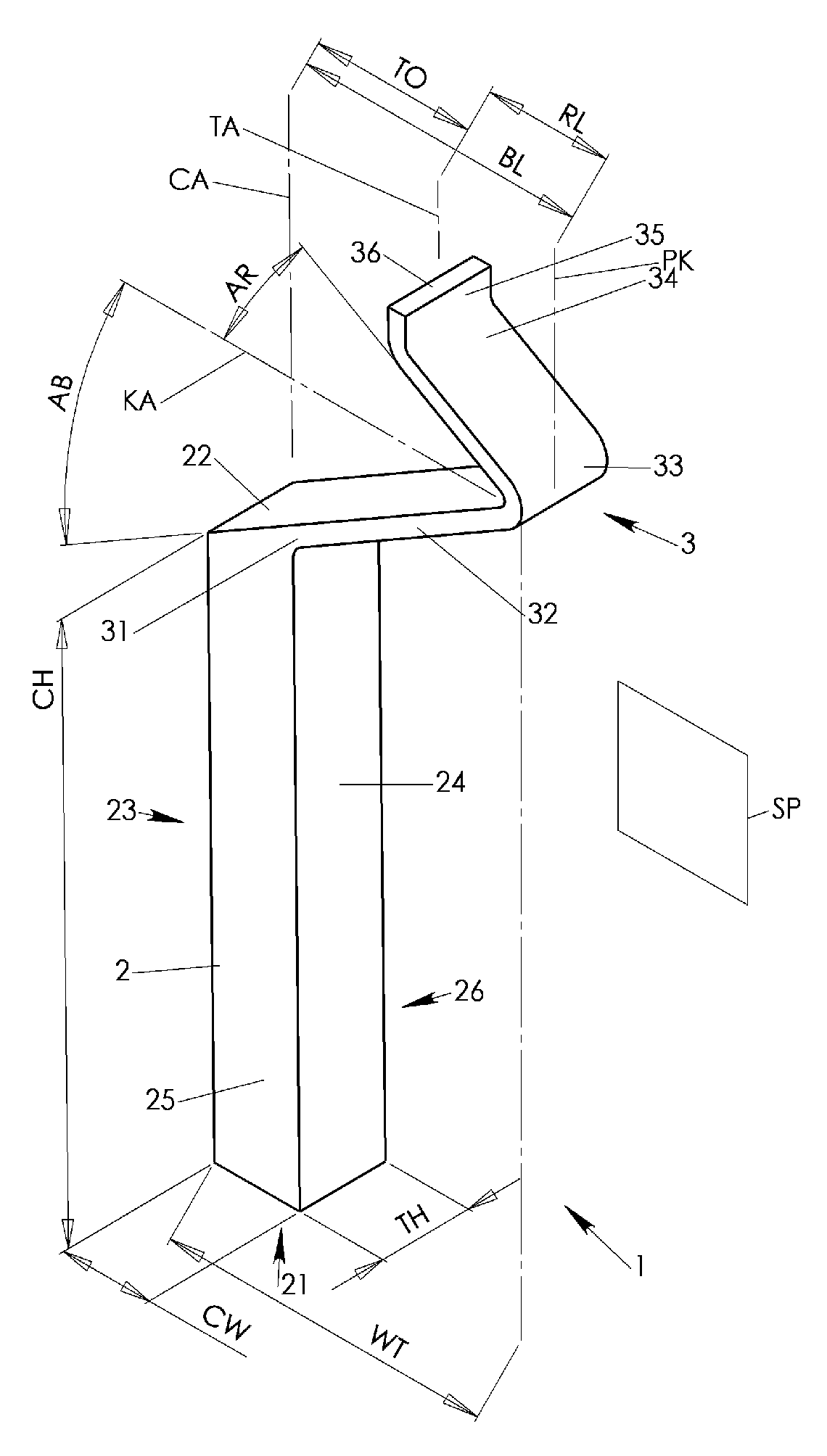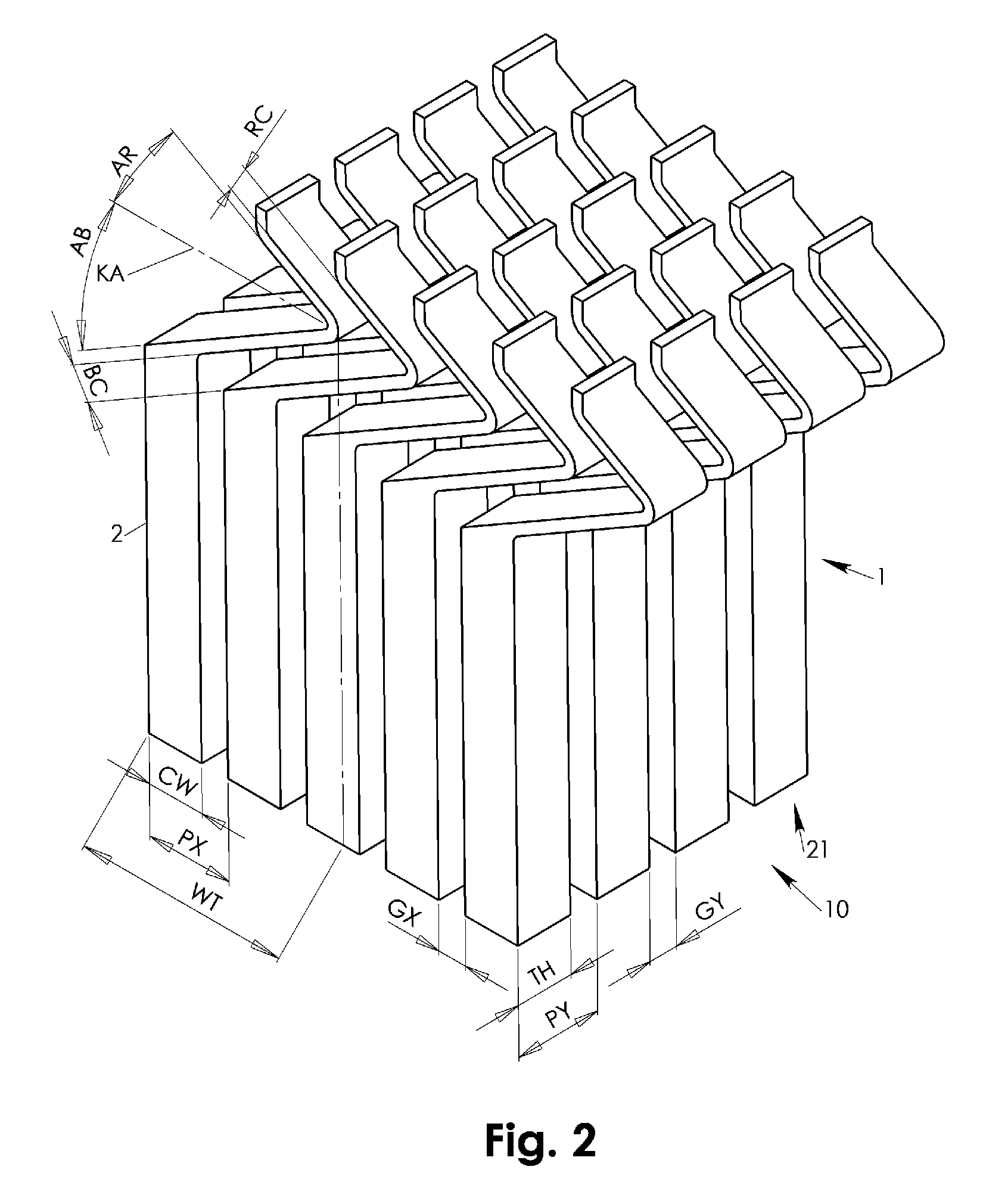Probes with high current carrying capability and laser machining methods
- Summary
- Abstract
- Description
- Claims
- Application Information
AI Technical Summary
Benefits of technology
Problems solved by technology
Method used
Image
Examples
example 1
[0158]Three probe embodiments of the present invention were evaluated for increased CCC. The three embodiments are illustrated in FIG. 41. Probe B comprises highly conductive core 4100, e.g. an approximately 10 micron Cu core. Probe A is the same as Probe B except that core layer 4102 is made of NiCo (i.e., probe A is all NiCo). Probe C is the same as Probe A, except that the outer surface comprises a highly conductive material, e.g. an approximately 3 micron thick Cu layer deposited on the outer surface of Probe C.
[0159]The Probe C embodiment showed unsatisfactory results because the Cu plating layer tended to crack in operational cycling tests, as seen in FIG. 42. Probe C cracked after 7 k / 75 μm cycling. This cracking result can be better understood by considering the stress distribution in probe designs A, B, and C as illustrated in section view in FIG. 43. Regions 4300 on the plots of FIG. 43 show regions of high stress, and it is apparent that the Cu plating of probe C experien...
example 2
[0160]Probe embodiments were further investigated by considering temperature and stress distributions within the probes. FIG. 44 illustrates an example of such investigations. Region 4402 illustrates the high-temperature and high-stress region of probe 4400. Green to blue regions 4404 illustrate low stress and low temperature regions of probe 4400. Frequently, as in the example of FIG. 44, the high-temperature and high-stress regions of a probe coincide and determine the CCC of the probe. In this case, region 4402 of probe 4400 determined the CCC of probe 4400.
[0161]In a preferred embodiment of the present invention, the high-conductivity core in probe B of FIG. 41 is trimmed to remove some of its highest-stress material, as illustrated in FIG. 45. To compensate for the loss in electrical conductivity caused by this trimming, core layer 4500 can be made somewhat thicker. FIG. 46 illustrates two probe embodiments that were compared. In probe B1, core 4600 is, for example, approximate...
example 3
[0162]In the examples above, two approaches for improving probe CCC were considered. The preceding description relates to a first approach of including a high-conductivity layer in a multi-layer probe. In a second approach, a high conductivity layer is also included in the probe, but the geometry is significantly different. More specifically, as illustrated in FIG. 48, high conductivity core 4802 (e.g., Cu) is vertical with respect to the overall layer structure of probe 4800, as opposed to being horizontal as it was in the first two examples.
[0163]The significance of this difference is shown when comparing the orientation of the cores in FIGS. 45 and 46 to the orientation of the core in FIG. 48. More specifically, the plane of probe deformation is horizontal in this geometry. When probe deformation occurs in this plane, the left side of the probe is in a state of compression and the right side of the probe is under tension (or vice versa). As a result of this stress pattern, the ce...
PUM
| Property | Measurement | Unit |
|---|---|---|
| Length | aaaaa | aaaaa |
| Length | aaaaa | aaaaa |
| Current | aaaaa | aaaaa |
Abstract
Description
Claims
Application Information
 Login to View More
Login to View More - R&D
- Intellectual Property
- Life Sciences
- Materials
- Tech Scout
- Unparalleled Data Quality
- Higher Quality Content
- 60% Fewer Hallucinations
Browse by: Latest US Patents, China's latest patents, Technical Efficacy Thesaurus, Application Domain, Technology Topic, Popular Technical Reports.
© 2025 PatSnap. All rights reserved.Legal|Privacy policy|Modern Slavery Act Transparency Statement|Sitemap|About US| Contact US: help@patsnap.com



